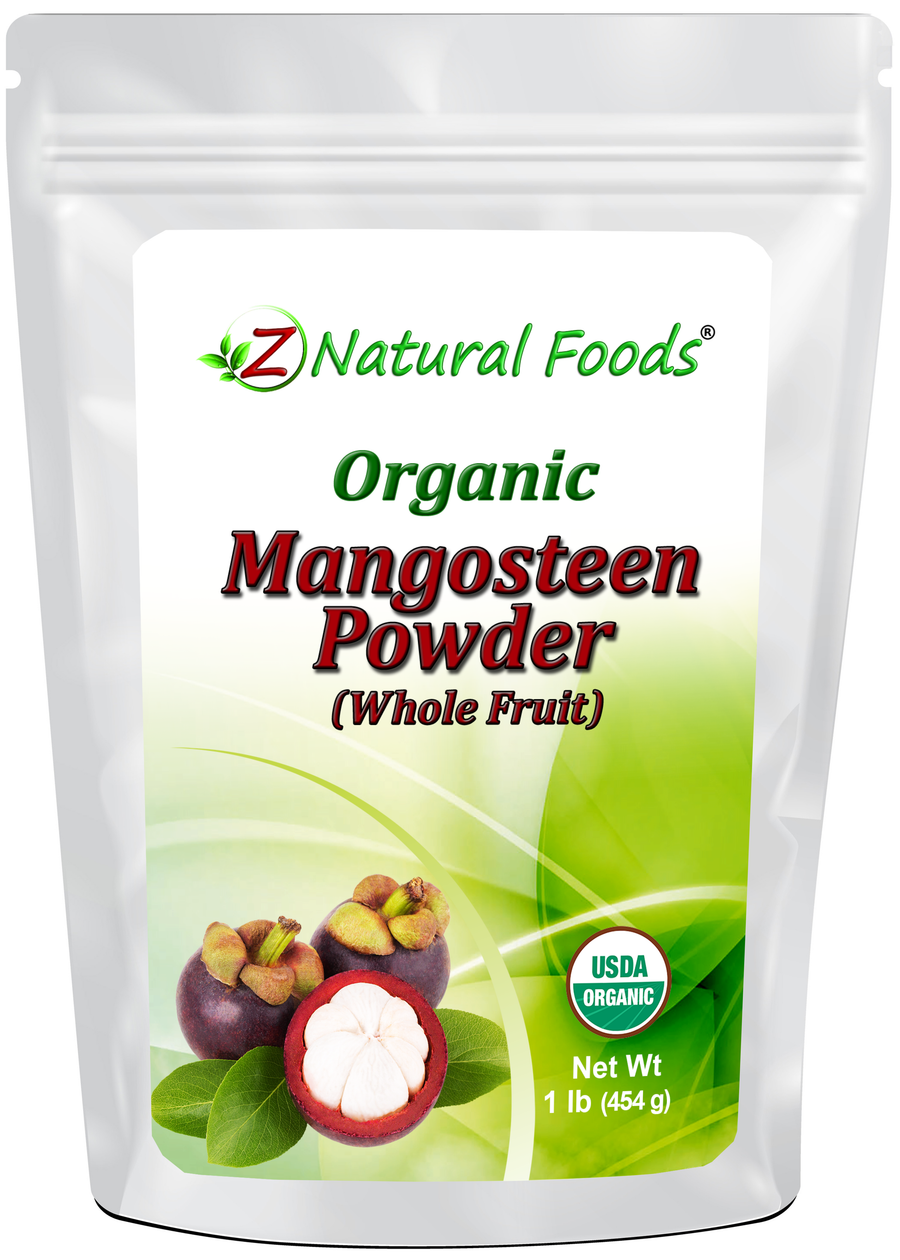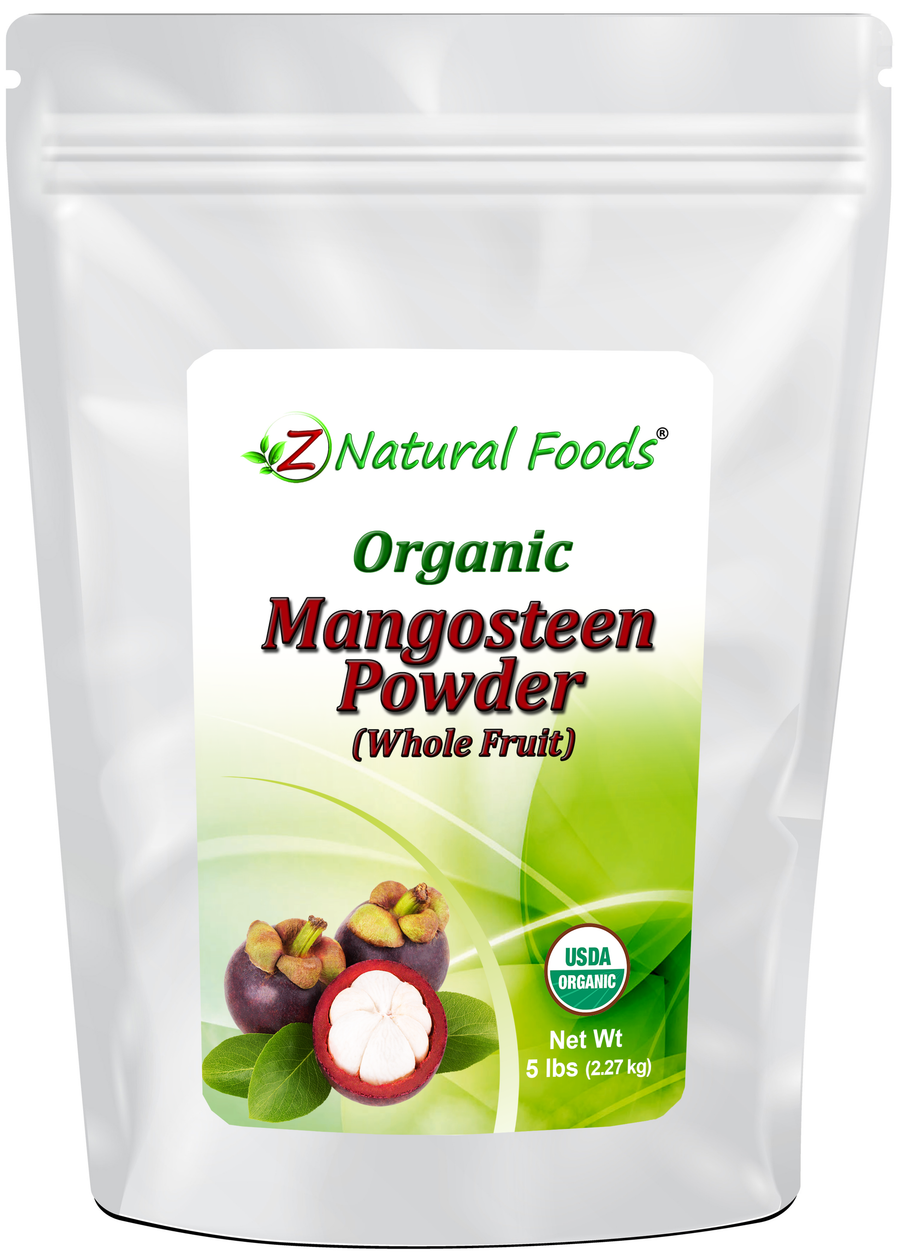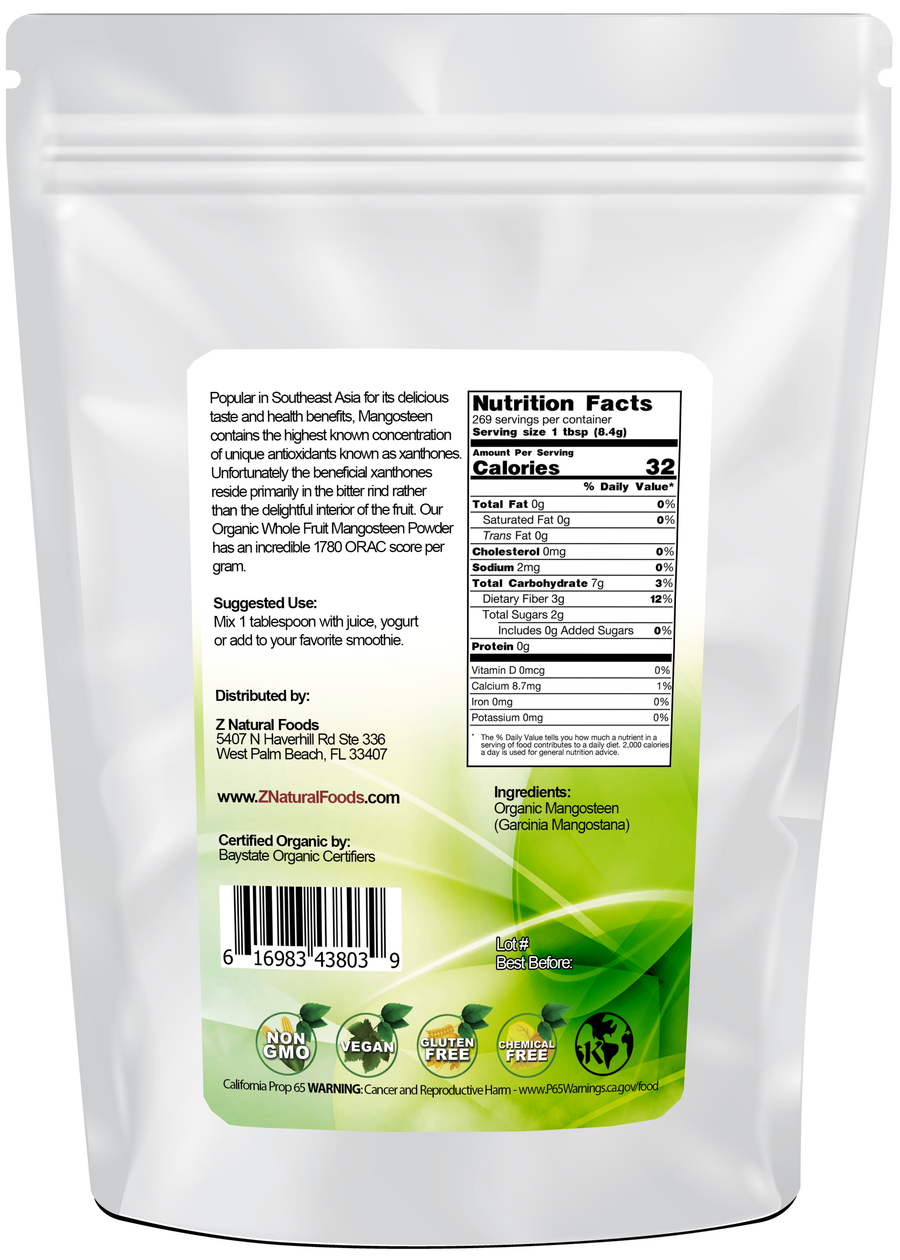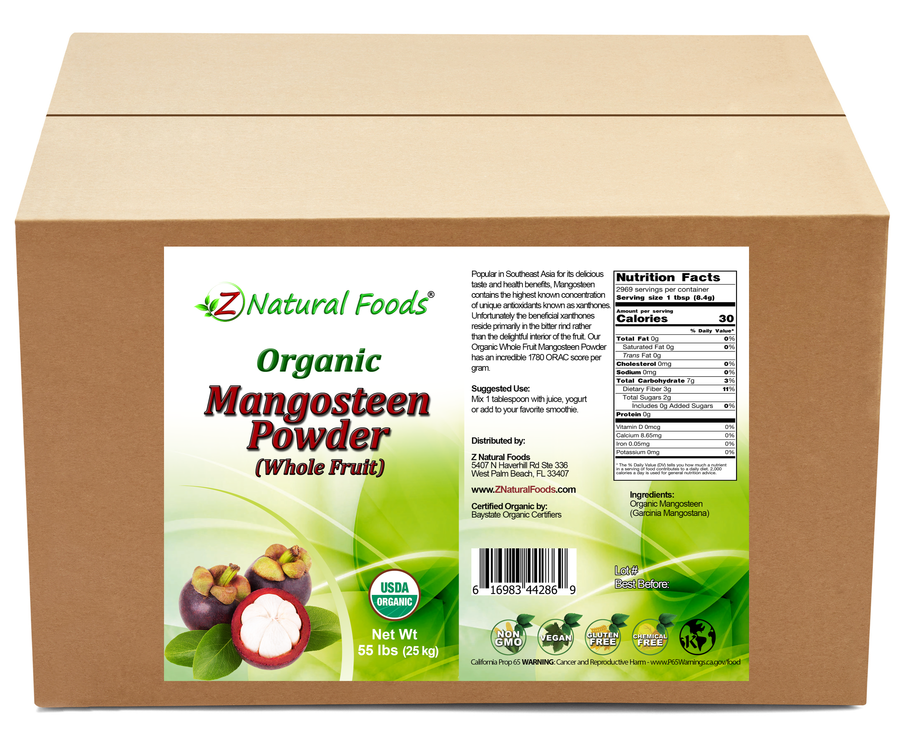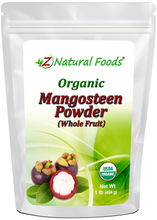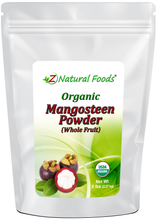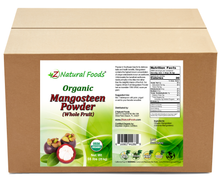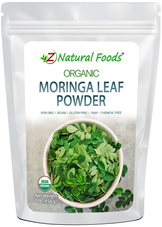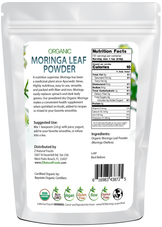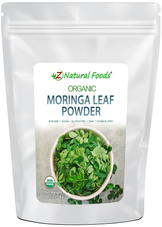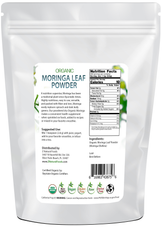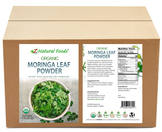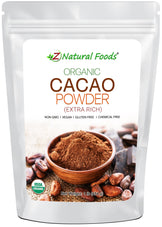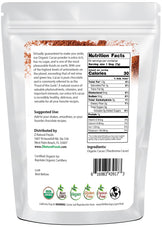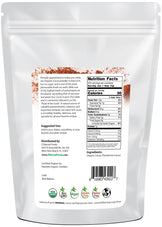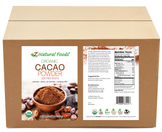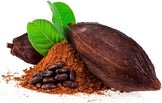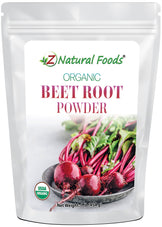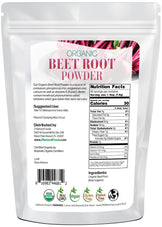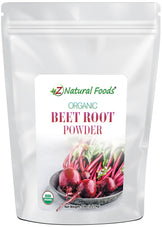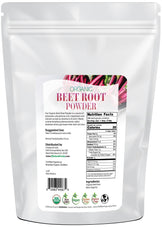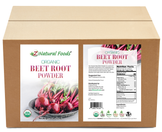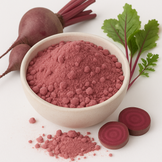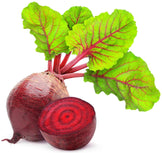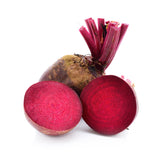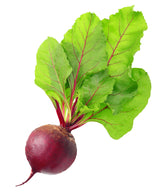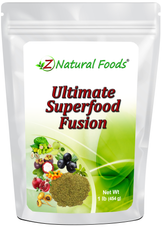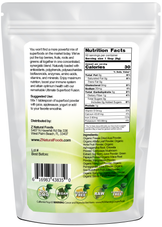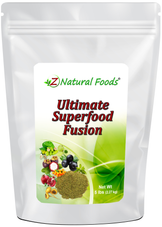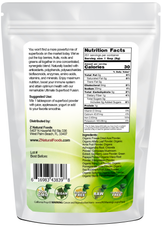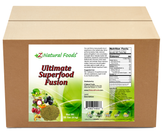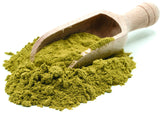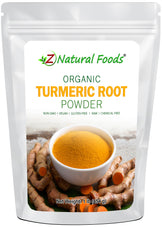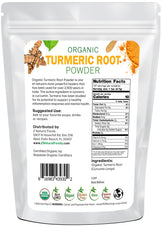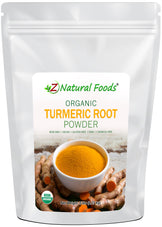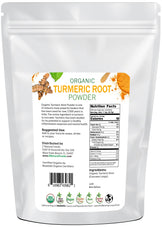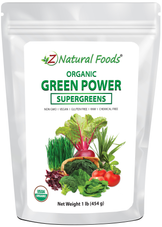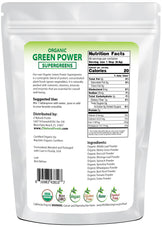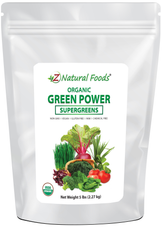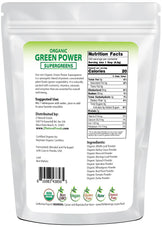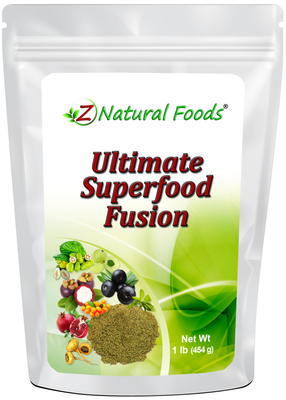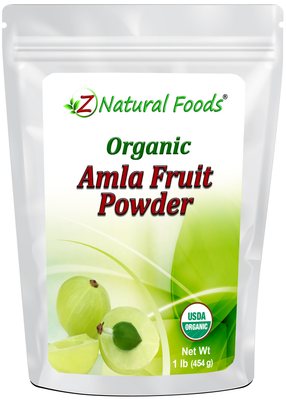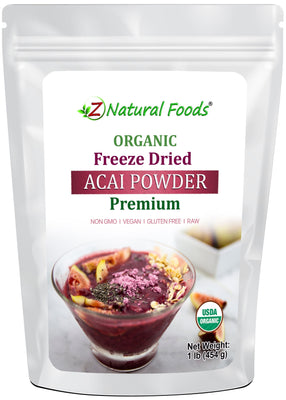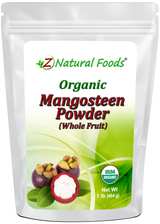About Product
Organic Mangosteen Powder is made from the dried and finely ground rind of the mangosteen fruit, a tropical delicacy native to Southeast Asia. With its naturally sweet and tangy flavor, it blends smoothly into smoothies, juices, yogurt, oatmeal, and desserts.
Convenient and shelf-stable, this versatile powder can also be sprinkled into sauces, dressings, or salads for a bright fruity twist. A unique ingredient with a refreshing taste, mangosteen powder adds tropical flair to both sweet and savory recipes.
Some research suggests that Mangosteen may contain the following constituents:
- Minerals: Phosphorus
- Vitamins: Vitamin C, Thiamin, Riboflavin, Niacin, Pantothenic Acid, Beta-carotene
- Phytochemicals: Proanthocyanidins, Catechins, Flavonoids, Polysaccharides, Sterols
- Xanthones: A-Mangostin, B-Mangostin, 3-iSOMANGOSTIN, 9-hYDROXYCALABAXANTHONE, Gartanin, 8-Desoxygartanin, bPalmitic acid, Stearic acid, Palmitoleic acid, Oleic acid, Linoleic acid, Linolenic acid, Arachidic acid, Gadoleic acid, Eicosadienoic acid
Suggested Use: Mix one tablespoon with juice and yogurt or add to your favorite smoothie.
Mixing suggestions: To increase flavor and nutritional profile, combine with our organic premium acai powder in a smoothie.
Botanical Name: Garcinia mangostana L.
Other Names: mung-koot, manggis, mangostan, mangis.
Parts Used: Whole Mangosteen Fruit including Pericarp (rind) and excluding seeds.
Ingredients: Mangosteen Fruit.
Origin: Grown and dried in Thailand and packaged with care in Florida, USA.
Certifications: Certified USDA Organic.
How to Maintain Optimum Freshness
- This product is packaged in airtight stand-up, resealable foil pouches for optimum freshness.
- Once opened, push the air out of the pouch before resealing it to preserve maximum potency.
- Keep your powder in a cool, dark, dry place.
This product is 100% natural and minimally processed:
Taste, smell, texture, and color vary from batch to batch. Go here to learn why our products may naturally vary.
The important protections we take to bring you safe and nutritious superfoods:
Please go here to discover the essential steps we take to deliver fresh, quality nutrition.
Bulk Quantities?
Need to order a large quantity of our products? We are happy to help! Please get in touch with our Bulk department to discuss the details.
* Product packaging, pictures, and origin may vary.
Sources & References
1. Popenoe, Wilson. The mangosteen in America. Jour. of Hered. Vol. VI, No. 8, Aug 15., pages 339-347. 1915
2. (2003). "Oligomeric Proanthocyanidins (OPCs)." Alternative Medicine Review 8(4): 442-450.
3. Ames, B. (1983). "Dietary carcinogens and anticarcinogens; oxygen radicals and degenerative diseases." Science 221: 1256-1263.
4. Ames, B., M. Shigenaga, et al. (1993). "Oxidants, antioxidants, and the degenerative diseases of aging." Proc. Nat. Acad. Sci. 90: 7915-7922.
5. Asai, F., M. Iinuma, et al. (1995). "A xanthonefrom pericarps of Garcinia mangostana." Phytochemistry 39(4): 943-944.
6. Balasubramanian, K. and K. Rajagopalan (1988). "Novel xanthones from Garcinia mangostana, structures of BR-xanthone-A and BR-xanthone-B." Phytochemistry 27(5): 1552-1554.
7. Bani, D., L. Giannini, et al. (2006). "Epigallocatechin-3-Gallate Reduces Allergen-Induced Asthma-Like Reaction in Sensitized Guinea Pigs." J Pharmacol Exp Ther 317(3): 1002-1011.
8. Barrett, O. (1912). "The Genus Garcinia: The mangosteen and related species." Philippine Journ. of Science: 66-72.
9. Beccari, O. (1904). Wanderings in the great forests of Borneo; travels and researches of a naturalist in Sarawah. London, Archibald Constable & Co. Begum, N., C. Gopalakrishnan, et al. (1982). "Anti-ulcer and antimicrobial activities of Gartanin, a xanthone from Garcinia Mangostana Linn. ." Bull Islam. 2(20): 518-521
10. Benemerito, A. N. (1936). "The Garcinia of South China (Guttiferae)." Lingnan Sci. Journ. 15: 57-66.
11. Bennett, G. and H. Lee (1989). "Xanthones from Guttiferae." Phytochemistry 28: 967-998.
12. Bennett, G. J., H. H. Lee, et al. (1990). "Biosynthesis of Mangostin. Part 1: The origin of the xanthone skeleton." J. Chem. Soc. Perkin Trans.: 2671-2676.
13. Bennett, G. J., L. P. Lee, et al. (1990). "Synthesis of minor xanthones from Garcinia mangostana." Journal of natural products 53(6): 1463-1470.
14. Bentley, R. (1867). "Note on the substitution of Mangosteen (Garcinia mangostana) for Bael (Agle marmelos)." Pharm Journ 8(2): 654-655.
15. Bhakuni, D., A. Goel, et al. (1990). "Screening of Indian plants for biological activity." Indian J Exp Biol 28: 619-637.
16. Broadway, W. E. (1892). "The Mangosteen, Garcinia mangostana." Gard. Chron. 12(3): 78-79.
17. Broadway, W. E. (1918). "The cultivated fruits, and nuts, Of Trinidad and Tobago." Trinidad and Tobago Dept. Agr. Bul. 17: 19-28.
18. Buenz, E., B. Bauer, et al. (2006). "Searching historical herbal texts for potential new drugs." bmj 333: 1314-1315.
19. Buenz, E., H. Johnson, et al. (2004). "Bioprospecting Rumphius's Ambonese Herbal: Volume I." Journal of Ethnopharmacology 96: 57-70.
20. Bullangpoti, V. (2004). "Effects of mangosteen'speels and rambutan's seeds on toxicity, esterase and glutathione-S-transferase in rice weevils." 42nd Kasetsart University Ann Conf: 224-31.
21. Caius, J. (1986). The Medicinal and Poisonous Plants of India. Jodhpur, India, Scientific Publishers.
22. Chairungsrilerd, N., K. Furukawa, et al. (1996). "Histaminergicand serotonergic receptor blocking substances from the medicinal plant Garcinia mangostana." Planta Med 62(5): 471-472.
23. Chairungsrilerd, N., K. Furukawa, et al. (1996). "Pharmacological properties of alpha-mangostin, a novel histamine H1 receptor antagonist." Eur J Pharmacol 314(3): 351-356.
24. Chairungsrilerd, N., K. Furukawa, et al. (1998). "Effect ofgamma-mangostin through the inhibition of 5-hydroxy-tryptamine2A receptors in 5-fluoro-alpha-methyltryptamine-induced head-twitch responses of mice." Br J Pharmacol 123(5): 855-862.
25. Chairungsrilerd, N., K. I. Furukawa, et al. (1998). "Gamma-mangostin, a novel type of 5-hydroxytryptamine 2A receptor antagonist." Naunyn Schmiedebergs Arch Pharmacol 357(1): 25-31.
26. Chairungsrilerd, N., S. Nozoe, et al. (1996). "Mangostanol, a prenyl xanthone from Garcinia mangostana." Phytochemistry 43(5): 1099-1102.
27. Chanarat, P., N. Chanarat, et al. (1997). "Immunopharmacological activity of polysaccharide from the pericarb of mangosteen garcinia: phagocytic intracellular killing activities." J Med Assoc Thai 80 (1): 149-154.
28. Chen, L.-G., L.-L. Yang, et al. (2008). "Anti-inflammatory activity of mangostins from Garcinia mangostana." Food and Chemical Toxicology 46(2): 688-693.
29. Chen, S. X., M. Wan, et al. (1996). "Active constituents against HIV-1 protease from Garcinia mangostana." Planta Med 62(4): 381-382.
30. Chiang, L.-C., H.-Y. Cheng, et al. (2004). "In vitro evaluation of antileukemic activity of 17 commonly used fruits and vegetables in Taiwan." ebensmittel-Wissenschaft & -Technologie/Food Science & Technology 37(5): 539-544.
31. Chomnawang, M., S. Surassmo, et al. (2005). "Antimicrobial effects of Thai medicinal plants against acne-inducing bacteria." Ethnopharmacology 101(1-3): 330-3.
32. Chomnawang, M., S. Surassmo, et al. (2007). "Effect of Garcinia mangostana on inflammation caused by Propionibacterium acnes." Fitoterapia 78(6): 401-8. Chopra, R., S. Nayar, et al. (1956). Glossary of Indian Medicinal Plants. New Delhi.
33. Chuakul, W. (1992). Thai Medicinal Plants. Bangkok, Prachachon Co., Ltd. Combs, R. (1897). "Cuban medicinal plants " Pharm. Rev. 15: 87-91.
34. Dharmaratne, H. (2005). "Antibacterial activity of alpha-mangostin against vancomycin resistant Enterococci (VRE) and synergism with antibiotics." Phytomedicine 12(3): 203-8.
35. Dharmaratne, H., K. Piyasena, et al. (2005). "A geranylated biphenyl derivative from Garcinia malvgostana." Nat Prod Res 19(3): 239-43.
36. Dragendorff, O. (1931). "Ueber das harz von Garcinia mangostana L." Justus Liebigs Ann. der Chem. 482: 280-301.
37. Du, C. T. and F. J. Francis (1977). Anthocyanins of mangosteen, Garcinia mangostana. Journal of food science: 1667-1668.
38. Duke, J. A. (1986). CRC handbook of proximate analysistables of higher plants. Florida, CRC Press, Inc. Duke, J. A. and J. L. duCellier (1993). CRC Handbook of Alternative Cash Crops. Boca Raton, CRC Press.
39. Dutta, P., A. Sem, et al. (1987). Indian Journal of Chemistry 26B: 281.
40. Ee , G., S. Daud, et al. (2006). "Xanthones from Garcinia mangostana (Guttiferae)." Nat Prod Res 20(12): 1067-73.
41. Ee, G., S. Izaddin, et al. (2004). "Secondary metabolites from Annona, Garcinia, Mesua and Piper species and their larvicidal properties." Tropical Biomedicine 21(1): 23-29.
42. Ellis, J. (1710-1776). A Description of the Mangostan and the Bread-fruit. London, Royal Societies of London and Upsal.
43. Engstrand, L. (1982). "Mangostan och andra exotiska frukter." Svensk botanisk tidskrift 76(1): 5-8.
44. Facciotti, M. T., P. B. Bertain, et al. (1999). "Improved stearate phenotype in transgenic canola expressing a modified acyl-acylcarrier protein thioesterase." Nat Biotechnol 17(6): 593-597.
45. Fain, O. (2004). "Vitamin C deficiency." Rev Med Interne. 25(12): 872-80.
46. Fairchild, D. (1903). "The mangosteen, queen of tropical fruits." Soc. Hort. Sci. Proc.: 14-15.
47. Fairchild, D. (1915). "The Mangosteen." J Genetics 6: 339-347.
48. Fairchild, D. (1915). "The Mangosteen: "Queenof Fruits" Now almost confined to Malayan Archipelago, but can be acclimated in may parts of tropics-Experiments in America-Desirablity of widespread cultivation." J Hered 6: 339-347.
49. Fan, C. and J. Su (1997). "Antioxidative mechanism of isolated components from methanol extract of fruit hulls of Garcinia mangostana L." Journal of Chinese Agricultural Chemical Society 35(5): 540-551.
50. Feldkamp, C. L. (1946). The Mangosteen: A list of references. Dept of Agric. Lab U. S. D. o. A. Library, Washington, D.C.: 29.
51. Feng, J., T. Yamakuni, et al. (2004). "Potent antioxidant activity of unripe fruits of Garcinia mangostana L." Natural Medicines 58: 156-159.
52. Fu, C., A. Loo, et al. (2007). "Oligomeric proanthocyanidins from mangosteen pericarps." J Agric Food Chem 55(19): 7689-94.
53. Furukawa, K., N. Chairungsrilerd, et al. (1997). "[Novel types of receptor antagonists from the medicinal plant Garcinia mangostana]." Nippon Yakurigaku Zasshi 110 Suppl 1: 153P-158p.
54. Furukawa, K., K. Shibusawa, et al. (1996). "The mode of inhibitory action of alpha-mangostin, a novel inhibitor, on the sarcoplasmic reticulum Ca(2+)-pumping ATPase from rabbit skeletal muscle." Jpn J Pharmacol 71(4): 337-340.
55. Gales, L. and A. Damas (2005). "Xanthones-A structuralperspective." Current Medicinal Chemistry 12: 2499-2515.
56. Garcin, L. (1735). "The settling of a new Genus of plants, called after the Malayans, Mangostans." Roy. Soc. Ondon, Phil Trans 38: 232-242.
57. Garnett, M. and S. Sturton (1932). "G. mangostana in the treatment of amoebic dysentery." Chiness Med J 46(10): 969-973.
58. Geissler, J. G. V. a. C. (1997). The New Oxford Book of Food Plants. The New Oxford Book of Food Plants. J. G. V. a. C. Geissler, Oxford University Press: 239 pp.
59. Gopalakrishnan, C., D. Shankaranarayanan, et al. (1980). "Effect of mangostin, a xanthone from Garcinia mangostana Linn. in immunopathological & inflammatory reactions." Indian J Exp Biol 18(8): 843-846.
60. Gopalakrishnan, G. and B. Balaganesan (2000). "Two novel xanthones from Garcinia mangostana." Fitoterapia 71(5): 607-609.
61. Gopalakrishnan, G., B. Banumathi, et al. (1997). "Evaluation of the antifungal activity of natural xanthones from Garcinia mangostana and their synthetic derivatives." J Nat Prod 60(5): 519-524.
62. Govindachari, T. R., B. R. Pai, et al. (1971). Isolation of three new xanthones from Garcinia mangostana Linn. Indian journal of chemistry: 505-506.
63. Govindachari, T. R., B. R. Pai, et al. (1971). Xanthones of Garcinia mangostana Linn. Tetrahedron: 3919-3926.
64. Guha Bakshi, D., P. Sensarma, et al. (2001). A Lexicon of Medicinal Plants in India.
65. Calcutta, India, Naya Prokash.
66. Hamada, M., K. Iikubo, et al. (2003). "Biological activities of alpha-mangostin derivatives against acidic sphingomyelinase." Bioorg Med Chem Lett 13(19): 3151-3153.
67. Harborne, J. and H. Baxter (1983). Phytochemical Dictionary. A Handbook of Bioactive Compounds from Plants.London, Taylor & Frost.
68. Harrison, L. J. (2002). "Xanthones from the heartwood of Garcinia mangostana." Phytochemistry 60(5): 541-548.
69. Haruenkit, R., S. Poovarodom, et al. (2007). "Comparative Study of Health Properties and Nutritional Value of Durian, Mangosteen, and Snake Fruit: Experiments In vitro and In vivo." J. Agric. Food Chem.
70. Hawkins, D. J. and J. C. Kridl (1998). "Characterization of acyl-ACP thioesterases of mangosteen (Garcinia mangostana) seed and high levels of stearate production in transgenic canola." Plant J 13(6): 743-752.
71. Ho, C., Y. Huang, et al. (2002). "Garcinone E,a xanthone derivative,has potent cytotoxic effect against hepatocellular carcinoma cell lines." Planta Med 68(11): 975-979.
72. Holloway, D. M. and F. Scheinmann (1975). Phenolic compounds from the heartwood of Garcinia mangostana. Phytochemistry: 2517-2518.
73. Hooker, W. (1851). Kew Gardens: A Popular Guide tothe Royal Botanic Gardens of Kew. London, Longman, Brown, Green, and Longmans.
74. Hopert, A. C., A. Beyer, et al. (1998)."Characterization ofestrogenicity of phytoestrogens in an endometrial-derived experimental model." Environ Health Perspect 106(9): 581-586.
75. Huang, Y. L., C. C. Chen, et al. (2001). "Three xanthones and a benzophenone from Garcinia mangostana." J Nat Prod 64(7): 903-906.
76. Iinuma, M., H. Tosa, et al. (1996). "Antibacterial activity of xanthones from guttiferaeous plants against methicillin-resistant Staphylococcus aureus." J Pharm Pharmacol 48(8): 861-865.
77. Jefferson, A., K. Y. Sim, et al. (1970). Studiesin the xanthone series. xVIII. isolation of gamma-mangostin from Garcinia mangostana, and preparation of the natural mangostins by selective demethylation. Australian J Chem: 2539-2543.
78. Jessica Hsu, G. S., Mitchel Goldman (2007). "Evaluating the efficacy in improving facial photodamage with a mixture of topical antioxidants." Journal of Drugs in Dermatology 6(11): 8.
79. Ji, X., B. Avula, et al. (2007). "Quantitative and qualitative determination of six xanthones in Garcinia mangostana L. by LC-PDA and LC-ESI-MS."J Pharm Biomed Anal. 43(4): 1270-1276.
80. Ji, X., B. Avula, et al. (2007). "Quantitative and qualitative determination of six xanthones in Garcinia mangostana L. by LC-PDA and LC-ESI-MS.(Author abstract)."
81. Journal of Pharmaceutical and Biomedical Analysis 43(4): 1270(7).
82. Jinsart, W., B. Ternai, et al. (1992). "Inhibition of wheat embryo calcium-dependent protein kinase and other kinases by mangostin and gamma-mangostin." Phytochemistry 31(11): 3711-3713.
83. Jiwajinda, S., V. Santisopasri, et al. (2002). "Supresive effects of edible Thai plants on superoxide and nitricoxide generation." Asian Pac J Cancer Prev. 3: 215-233.
84. Juijio Asai, H. T., Toshiyuki Tanaka, Munekazu Irnuma (1995). "A xanthone from the pericarps of garcinia mangostana." Phytochemistry 39(4): 2.
85. Jung HA, Su BN, et al. (2006). "Antioxidant xanthones from the pericarp of Garcinia mangostana (Mangosteen)." J Agric Food Chem 54(6): 2077-82.
86. Kanchanapoom, K. and M. Kanchanapoon (1998). Tropical and subtropical fruits: Mangosteen. Auburndale, Fla., Agscience.
87. Kevin, K. (1994). "Take a walk on the wild side: exotic fruits add unique flair to flavor systems in this handbook of tropical fruit flavors. (includes list of suppliers)." Food Processing v55(n5): p27(4).
88. Khan, N. U. (1991). "Phytochemical studies on Indian medicinal plants." Recent Advances in Medicinal, Aromatic & Spince Crops 1: 113-118.
89. Kim, S.-H., H.-J. Park, et al. (2006). "Epigallocatechin-3-gallate protects toluene diisocyanate-induced airway inflammation in a murine model of asthma." FEBS Letters 580(7): 1883-1890.
90. Kingsley, C. (1890). Glaucus; Or, The Wonders of the Shore, Macmillan.
91. Kirtikar, K. and B. Basu (1999). Indian Medicinal Plants. Dehra Dun, India, International Book Distributors
92. Krishnapilly, B., M. Marzalina,et al. (1993). "Seeds and fruits of some common tropical species used as medicine by folk healers." Bulletin FRIM 3(2): 9-11.
93. Lee, H. H. (1981). "Synthesis of the mangostins." Journal of the Chemical Society.
94. Perkin transactions I: Organic and bio-organic chemistry(12): 3205-3213.
95. Leeuwenberg, A. (1987). Medicinal and poisonous plants of the tropics. Wageningen, Netherlands, Centre for Agriculture Publishing and Documentation.
96. Leong, L. and G. Shui (2002). "An investigation of antioxidant capacity of fruits in Singapore markets." Food Chemistry 76: 69-75.
97. Leontowicz, H., M. Leontowicz, et al. (2006). "Bioactive properties of Snake fruit (Salacca edulis Reinw) and Mangosteen (Garcinia mangostana) and their influence on plasma lipid profile and antioxidant activity in rats fed cholesterol." Eur Food Res Technol 223: 697-703.
98. Likhitwitayawuid, K., T. Phadungcharoen, etal. (1998). "Antimalarial xanthones from Garcinia cowa." Planta Med 64(1): 70-72.
99. Lin, C., S. Liou, et al. (1996). "Xanthone derivatives as potential anti-cancer drugs." J Pharm Pharmacol 48: 539-544.
100. Liu, R. H. (2003). "Health benefits of fruit and vegetables are from additive and synergistic combinations of phytochemicals." Am J Clin Nutr 78(3): 517S-520.
101. Lu, Z. X., M. Hasmeda, et al. (1998). "Inhibition of eukaryote protein kinases and of a cyclic nucleotide-binding phosphatase by prenylated xanthones." Chem Biol Interact 114(1-2): 121-140.
102. Mackay, D. (1985). In the wake of Cook; Exploration, Science & Empire, 1780-1801.
103. New York, St. Martin's Press. MacLeod, A. J. and N. M. Pieris (1982). "Volatile flavour components of mangosteen, Garcinia mangostana." Phytochemistry 21(1): 117-119.
104. Mahabusakam, W., C. Pakawatchai, et al. (1998). "Bicyclomangostin: A new acid-catalysed cyclization product from mangostin." Aust. J. Chem. 51(3): 6.
105. Mahabusakam, W., S. Phongpaicht, et al. (1983). "Screening ofantibacterial activity of chemicals from Garcinia mangostana." Warasan Songkhla Nakkharin 5(4): 337-9.
106. Mahabusakam, W., S. Phongpaicht, et al. (1983). "Screening of antifungal activity of chemicals from Garcinia mangostana." Warasan Songkhla Nakkharin 5(4): 341-2.
107. Mahabusakam, W., P. Wiriyachitra, et al. (1987). "Chemical constituents of Garcinia mangostana." J Nat Prod 50: 474-78.
108. Mahabusarakam W, Kuaha K, et al. (2006). "Prenylated xanthones as potential antiplasmodial substances." Planta Med 72(10): 912-6.
109. Mahabusarakam W, I. P., Saowaluk P. (1986). "Antimicrobial activities of chemical constituents from Garcinia Mangostana Linn." J Sci Soc Thailand 12: 239-242.
110. Mahabusarakam, W., J. Proudfoot, et al. (2000). "Inhibition of lipoprotein oxidation by prenylated xanthones derived from mangostin." Free Radic Res 33(5): 643-659.
111. Marcason, W. (2006). "What are the facts and myths about mangosteen?" J Am Diet Assoc. 106(6): 986.
112. Marona, H., E. Pekala, et al. (2001). "Pharmacological properties of some aminoalkanolic derivatives of xanthone." Pharmazie 56: 567-572.
113. Matsumoto, K., Y. Akao, et al. (2003). "Induction of apoptosis by xanthones from mangosteen in human leukemia cell lines." J Nat Prod 66(8): 1124-1127.
114. Matsumoto, K., Y. Akao, et al. (2005). "Xanthones induce cell-cycle arrest and apoptosis in human colon cancer DLD-1 cells." Bioorg Med Chem 13: 6064-6069.
115. Matsumoto, K., Y. Akao, et al. (2004). "Preferential target is mitochondria in alpha-mangostin-induced apoptosis in human leukemia HL60 cells." Bioorg Med Chem 12: 5799-5806.
116. McKenna, D. J., K. Hughes, et al. (2000). "GREEN TEA MONOGRAPH." Alternative Therapies in Health & Medicine 6(3): 61.
117. Moongkarndi, P., N. Kosem, et al. (2004). "Antiproliferation, antioxidation and induction of apoptosis by Garcinia mangostana (mangosteen) on SKBR3 human breast cancer cell line." J Ethnopharmacol 90(1): 161-166.
118. Moongkarndi, P., N. Kosem, et al. (2004). "Antiproliferative activity of Thai medicinal plant extracts on human breast adenocarcinoma cell line." Fitoterapia 75(3-4): 375-7.
119. Moore, L. (2005). Maharanis: The Lives and Times ofThree Generations of Indian Princesses, Penguin Books.
120. Morton, J. (1987). Fruits of warm climates. Miami.
121. Mouhot, H. (1864). Travels in Siam, Cambodia, Laos and Annam.London, White Lotus Press.
122. Munekazu, I., T. Hideki, etal. (1996). "Antibacterial activity of xanthones from guttiferaeous plants against methicillin-resistant Staphylococcus aureus." Journal of pharmacy and pharmacology 48: 861-865.
123. Nabandith, V., M. Suzui, et al. (2004). "Inhibitory effects of crude alpha-mangostin, a xanthone derivative, on two different categories of colon preneoplastic lesions induced by 1, 2-dimethylhydrazine in the rat." Asian Pac J Cancer Prev. 5(4): 433-8.
124. Nakagawa, Y., M. Iinuma, et al. (2007). "Characterized mechanism of [alpha]-mangostin-induced cell death: Caspase-independent apoptosis with release of endonuclease-G from mitochondria and increased miR-143 expression in human colorectal cancer DLD-1 cells." Bioorganic & Medicinal Chemistry 15(16): 5620-5628.
125. Nakatani, K., M. Atsumi, et al. (2002). "Inhibitions of histamine release and prostaglandin E2 synthesis by mangosteen, a Thai medicinal plant." Biol Pharm Bull 25(9): 1137-1141.
126. Nakatani, K., N. Nakahata, et al. (2002). "Inhibition of cyclooxygenase and prostaglandin E2 synthesis by gamma-mangostin, a xanthonederivative in mangosteen, in C6 rat glioma cells." Biochem Pharmacol 63(1): 73-79.
127. Nakatani, K., T. Yamakuni, et al. (2004). "gamma-Mangostin inhibits inhibitor-kappaB kinase activity and decreases lipopolysaccharide-induced cyclooxygenase-2 gene expression in C6 rat glioma cells." Mol Pharmacol 66(3): 667-74.
128. Nilar. and L. J. Harrison (2002). "Xanthones from the heartwood of Garcinia mangostana." Phytochemistry 60(5): 541-548.
129. Norum, K. and H. Grav (2002). "Axel Holst and Theodor Frolich--pioneers in the combat of scurvy." Tidsskr Nor Laegeforen 122(17): 1686-7.
130. Ohr, L. M. (2007). "Fruits pack a punch.(NUTRACEUTICALS)(fruits with high nutritional value)." Food Technology 61(8): 75-78.
131. Okudaira, C., Y. Ikeda, et al. (2000). "Inhibition of acidic sphingomyelinase by xanthone compounds isolated from Garcinia speciosa." J Enzyme Inhib 15(2): 129-138.
132. Othman, Y. and H. D. Tindall (1995). Mangosteen cultivation / Othman Yaacob and H.D.
133. Tindall. FAO plant production and protection papers ; 129, Rome : Food and Agriculture Organization of the United Nations, c1995.
134. Page, S., M. (2002). What is the most exotic fruit in the World? Marco Island Eagle.
135. Parveen, M., P. K. Dutta, et al. (1991). "Atriterpene from Garcinia mangostana." Phytochemistry 30(1): 361-362.
136. Parveen, M. and N. U. Khan (1988). "Twoxanthones from Garcinia mangostana." Phytochemistry 27(11): 3694-3696.
137. Passwater, R. "The free-radical theory of aging: Part I: How it all began; an interview with Dr. Denham Harman."
138. Peres, V., T. Nagem, et al. (2000). "Tetraoxygenated naturally occuring xanthones." Phytochemistry 55: 683-710.
139. Perry, L. and J. Metzger (1980). Medicinal plants of East and Southeast Asia: Attributed Properties and Uses. Cambridge, Massachusetts, MIT Press.
140. Phongpaichit S, Rungjindamai N, et al. (2006). "Antimicrobial activity in cultures of endophytic fungi isolated from Garcinia species." FEMS Immunol Med Microbiol.
141. Phongpaicht, O., L. Nilrat, et al. (1994). "Antibacterial activities of extracts from Garcinia mangostana pericarp on methicillin-resistant Staphylococous aureus and enterococuccus species." Songklanakarin Hournal of Sciences and Technology 16(4): 399-405.
142. Pinto, M., M. Sousa, et al. (2005). "Xanthone derivatives: New insights in biological activities." Current Medicinal Chemistry 12: 2517-2538.
143. Pongphasuk, N., W. Khunkitti, etal. (2005). "Anti-inflammatory and analgesic activities of the extract from Garcinia mangostana Linn." Traditional Medicine & Nutraceuticals 6: 125-130.
144. Popene (1932). The Oxford Companion to Food.
145. Portanova, J., Y. Zhang, et al. (1996). "Selective neutralization ofprostaglandin E2 blocks inflammation, hyperalgesia and interleukin 6 production in vivo." J Exp Med 184(883-891).
146. Preston, D. and M. Preston (2005). A Pirate of Exquisite Mind"”Explorer, Naturalist and Buccaneer: The Life of William Dampier. NY., Walker & Co.
147. Rassameemasmaung, S., A. Sirikulsathean, et al. (2007). "Effects of herbal mouthwash containing the pericarp extract of Garciniamangostana L on halitosis, plaque and papillary bleeding index." J Int Acad Periodontol 9(1): 19-25.
148. Redhead, J. and M. Boelen (1990). Utilization of tropical foods: fruits and leaves. Rome, Italy, Food and agriculture organization of the united nations.
149. Riscoe, M., J. Kelly, et al. (2005). "Xanthones as antimalarial agents: Discovery, mode of action, and optimization." Current Medicinal Chemistry 12: 2539-2549.
150. Roberts, J. C. (1961). "Naturally Occuring Xanthones." Chemical Reviews 61(6): 591-605.
151. Sakagami, Y., M. Iinuma, et al. (2005). "Antibacterial activity of alpha-mangostin against vancomycin resistant Enterococci (VRE) and synergism with antibiotics." Phytomedicine 12(3): 203-8.
152. Sakai, S., M. Katsura, et al. (1993). "The structure of garcinone E." Chem Pharm Bull 41(5): 958-960.
153. Saralamp, P., W. Chuakul, et al. (1996). Medicinal Plants in Thailand. Bangkok, Siambooks and Publications.
154. Sato, A., H. Fujiwara, et al. (2004). "Alpha-mangostin induces Ca2+-ATPase-dependent apoptosis via mitochondrial pathway in PC12 cells."J Pharmacol Sci. 95(1): 33-40.
155. Schmid, W. (1855). "Isolation of mangostin from Garcinia Mangostana Linn." Liebigs Ann93(83): 83-88.
156. Sen, A. K., N. Banerji, etal. (1981). "Minor xanthones of Garvinia mangostana." Phytochemistry 20(1): 183-185.
157. Sen, A. K., K. K. Sarkar, et al. (1986). Indian Journal of Chemistry 25B(1157). Sen, A. K., R. Uusvuori, et al. (1980). "A xanthone from Garcinia mangostana." Phytochemistry 19(10): 2223-2225.
158. Sen, A. K., R. Uusvuori, et al. (1982). "The structures of garcinones A, B and C: three new xanthones from Garcinia mangostana." Phytochemistry 21(7): 1747-1750.
159. Settheetham, W. and T. Ishida (1995). "Study of genotoxic effects of antidiarrheal medicinal herbs on human cells in vitro." Southeast Asian J Trop Med Public Health 26 Suppl 1: 306-310.
160. Shankaranarayan, D., C. Gopalakrishnan, et al. (1979). "Pharmacological profile of mangostin and its derivatives." Arch Int Pharmacodyn Ther 239(2): 257-269.
161. Sharon, N. Go, go, mangosteen. New Straits Times (Malaysia).
162. Sindermsuk, J. and S. Deekijsermphong (1989). "The antibacterial activities of crude extract from the fruit hull of Garcinia mangostana on enteric pathogens and intestinal commensal." Bull Dept Med Serv 14(6): 421-6.
163. Singhasivanon, P., K. Thimasarn, et al. (1999). "Malaria in tree crop plantations in south-eastern and western provinces of Thailand." Southeast Asian J Trop Med Public Health 30(3): 399-404.
164. Somboonpanya, P. (2001). "Sigmoid colon perforation by ingested Sandorica seed." J Med Assoc Thai 84(12): 1751-1753.
165. Sorenson, J. (2005). "Ancient voyagesacross the ocean to America." J. BofM Studies 14(1): 2-14.
166. Stout, G. (1956). Studies in the chemistry ofmangostin and some nitric acid oxidations.
167. Department of Chemistry. Cambridge, Massachusetts, Harvard University. Ph.D.: 80.
168. Suksamrarn, S., O. Komutiban, et al. (2006). "Cytotoxic prenylated xanthones from the young fruit of Garcinia mangostana." Chem Pharm Bull 54(3): 301-305.
169. Suksamrarn, S., N. Suwannapoch, et al. (2003). "Antimycobacterial activity of prenylated xanthones from the fruits ofGarcinia mangostana." Chem Pharm Bull (Tokyo) 51(7): 857-859.
170. Suksamrarn, S., N. Suwannapoch, et al. (2002). "Xanthones from the green fruit hulls of Garcinia mangostana." J Nat Prod 65(5): 761-763.
171. Sundaram, B. M., C. Gopalakrishnan, et al. (1983). "Antimicrobial activities of Garcinia mangostana." Planta Med 48(1): 59-60.
172. Suzuki, O., Y. Katsumata, et al. (1981). "Inhibition of type A and type B monoamine oxidases by naturally occurring xanthones." Planta Med 42(1): 17-21.
173. Swain, R. B. and D. Almquist (1991). "In search of the mangosteen." Horticulture 69(10): 54.
174. Swanson, I. (2003). "Antibiotic resistance of Propionibacterium acnes in Acnes vulgaris." Dermatology Nursing 5: 359-361.
175. Takahashi, T., T. Kamiya, et al. (1998). "Proanthocyanidins from Grape Seeds Promote Proliferation of Mouse Hair Follicle Cells In vitro and Convert Hair Cycle In vivo." Acta Dermato-Venereologica 78(6): 428-432.
176. Teerachaichayut, S., K. Y. Kil, et al. (2007). "Non-destructive prediction of translucent flesh disorder in intact mangosteenby short wavelength near infrared spectroscopy.(Author abstract)." Postharvest Biology and Technology 43(2): 202(5).
177. Titwan, A., Y. Pongpaibul, et al. (1992). "Topical preparations from medicinal plant in ance vulgaris." The Thai Journal of Pharmaceuticial Sciences 16(4): 354.
178. Tosa, H., M. Iinuma, et al. (1997). "Inhibitoryactivity of xanthone derivatives isolaged from some Guttiferaeous plants against DNA topoisomerases I and II." Chem Pharm Bull 45(2): 418-420.
179. Vane, J. (1971). "Inhibition of prostaglandin synthesis as a mechanism of action for aspirin-like drugs." Nat New Biol 231: 232-235.
180. Vlietinck, A. J., T. De Bruyne, et al. (1998). "Plant-derived leading compounds for chemotherapy of human immunodeficiency virus (HIV) infection." Planta Med 64(2): 97-109.
181. Voravuthikunchai, S. P. and L. Kitpipit (2005). "Activity of medicinal plant extracts against hospital isolates of methicillin-resistant Staphylococcus aureus." Clin Microbiol Infect 11(6): 510-12.
182. Voravuthikunchai, S. P., A. Lortheeranuwat, et al. (2004). "Effective medicinal plants against enterohaemorrhagic Escherichia coli 0157:H7." Journal of Ethnopharmacology 94: 49-54.
183. Voravuthikunchai, S. P., W. Popaya, et al. (2004). "Antibacterial activity of crude extracts of medicinal plants used in Thailand against pathogenic bacteria." Ethnopharmacologia 33: 60-65.
184. Wan, A. S. C. (1973). Garcinia mangostana: high resolution NMR studies of mangostin. Plant Med: 297-300.
185. Waring, E. J. (1868). Pharmacopeia of India. London, W. H. Allen & Co., 13, WaterlooPlace, Publishers to the India Office.
186. Weecharangsan, W., P. Opanasopit, et al. (2006). "Antioxidative and neuroprotective activities of extracts from the fruit full of Mangosteen (Garcinia mangostana Linn.)." Med Princ Pract 15: 281-287.
187. Whiteman, M. and T. Guan (2002). Antioxidant activities of some tropical fruits.
188. Department of Biochemistry, Faculty of Medicine. Singapore, National University of Singapore.
189. Wiebel, J., E. K. Chacko, et al. (1994). "Influence of irradiance on photosynthesis, morphology and growth of mangosteen (Garcinia mangostana L.) seedlings." Tree Physiol 14(3): 263-274.
190. Wiebel, J., D. Eamus, et al. (1993). "Gas exchange characteristics of mangosteen (Garcinia mangostana L.) leaves." Tree Physiol 13(1): 55-69.
191. Williams, P., M. Ongsakul, et al. (1995). "Mangostin inhibits the oxidative modification of human low density lipoprotein." Free Radic Res 23(2): 175-184.
192. Yapwattanaphun, C. and S. Subhadrabandhu (2004). "Phylogenic relationship of Mangosteen (Garcinia mangostana) and several wild relatives (Garcniaspp.) revealed by ITS sequence data." J Amer. Soc.Hort. Sci. 129(3): 368-373.
193. Yoshida, A., A. Manosroi, et al. (1995). "Molecular interactionsbetween phospholipids and mangostin in a lipid bilayer." Colloids and Surfaces B: Biointerfaces 4: 423-432.
194. Yoshikawa, M., E. Harada, et al. (1994). "Antioxidant constituents from the fruit hulls of mangosteen." Yakugaku Zasshi 114(2): 129-133.
195. http://healthyfood-list.blogspot.com/2012/02/mangosteen-benefits-for-cancer-diseases.html 196. http://www.naturalnews.com/009179_mangosteen_fruit_cure.html 197. http://en.wikipedia.org/wiki/Mangosteen 198. http://www.mangosteen.com/historyandfolklore.htm 199. http://www.ncbi.nlm.nih.gov/pubmed/22622784 200. Zhi-Qing, H., M. Toda, et al. (1992). "Mitogenic activity of (-)epigallocatechin gallate on B-cells and investigation of its structure-function relationship." International Journal of Immunopharmacology 14(8): 1399-1407.
196. http://www.ars-grin.gov/duke/
197. http://ndb.nal.usda.gov/ndb/foods
198. "Mangosteen (Garcinia mangostana Linn.) as a functional food: a review." by L.F.W. Law, Y.Y. Lee, and N. Kaur. Published in the International Journal of Food Sciences and Nutrition, 2010.
199. "Phytochemical and biological studies of Mangosteen (Garcinia mangostana L.)." by J.S. Kinghorn and H.H. Hirazumi. Published in the Journal of Natural Products, 2002.
200. "Antioxidant and anti-inflammatory activities of mangosteen pericarp extract." by K. Kunchai, T. Wannissorn, and P. Phumkhachorn. Published in the Journal of Ethnopharmacology, 2008.
201. "Garcinia mangostana L. (mangosteen): a review on its traditional uses, phytochemistry, and pharmacology." by A. M. Al-Reza, H. Haque, and M. Hossain. Published in the Journal of Ethnopharmacology, 2016.
202. "The anti-inflammatory and anti-cancer effects of xanthones from mangosteen." by C.Y. Lee, M.H. Huang, and J.K. Hsieh. Published in the Journal of Biomedicine and Biotechnology, 2011.
* Reviews & Success Stories Disclaimer
Product reviews solely reflect the views and opinions expressed by the contributors and not those of Z Natural Foods. Z Natural Foods does not verify or endorse any claims made in these reviews. Statements have not been evaluated by the FDA and are not intended to diagnose, treat, cure, or prevent any disease or health condition.REFERRAL PROGRAM
Share your personal link to your friends and welcome them with rewards. Claim yours when they make their first purchase.

GIVE
$10 off discount

GET
$10 off discount
